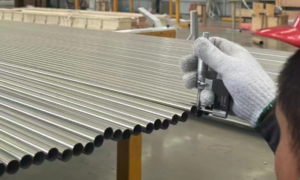Welding, as a common metal joining method, plays a significant role in metal manufacturing and processing. Especially for high-performance alloys, the quality of their welding performance directly affects the reliability of their applications. Hastelloy alloy, as an alloy with excellent properties, its welding performance is influenced by factors such as welding materials, welding methods, welding processes, and welding techniques. In this article, we will take a closer look at the weldability of Hastelloy alloy.

Analysis of the Weldability of Hastelloy Alloy:
Firstly, in terms of welding material selection, since Hastelloy alloy exhibits remarkable corrosion resistance and is often used in corrosive environments, it is essential that the welding electrodes or wires selected have comparable corrosion resistance to the base material. Furthermore, to avoid cracks and pores during welding, the welding materials must also possess high purity.
Secondly, regarding welding methods, Hastelloy alloy demonstrates good weldability, and three primary welding methods are commonly employed. The first is TIG welding, which enables precise welding on Hastelloy alloy and is suitable for thin plates and small-diameter pipes. However, this method requires a high level of technical skill from the operator.
The second is MIG welding, which can complete welding in a shorter time and is suitable for thicker plates and large-diameter pipes, facilitating mass production. However, the welding results of this method are relatively average.
The third is laser welding, an emerging welding technology that achieves high-precision welding. Nevertheless, due to the high cost of laser welding equipment, this method is relatively expensive and is more suitable for welding products with stringent quality requirements.
Furthermore, in terms of welding processes, during the welding process, to ensure that the weld area is less prone to corrosion or fatigue failure, it is necessary to precisely control the welding current and voltage based on the thickness of the workpiece, joint type, and welding position. Additionally, to guarantee the quality of weld formation and joint performance, appropriate adjustments should be made to the welding speed.
Moreover, in terms of welding techniques, before welding, it is essential to thoroughly clean the workpieces to remove surface oil, impurities, etc., to prevent the formation of pores and cracks in the weld. During welding, to reduce the precipitation of carbides and other phases in the weld and heat-affected zone, it is necessary to prevent air from infiltrating into cracks. After welding, it is also necessary to perform slow cooling or heat treatment on the Hastelloy alloy to eliminate welding stresses and ensure the stability of the weld structure and properties.
Conclusion
In conclusion, welding of Hastelloy alloy is a crucial processing technology. However, to achieve good welding quality, it is necessary to comprehensively consider factors such as welding materials, welding methods, welding processes, as well as operational techniques and key points, to achieve the best welding results.
Why Choose Huaxiao Alloy?
Thank you for reading our article and we hope it can help you to have a better understanding of the weldability of Hastelloy alloy. If you are looking for Hastelloy alloy suppliers and manufacturers online now, we would advise you to visit Huaxiao Alloy.
As a leading supplier of Hastelloy alloys from Shanghai China, Huaxiao Alloy provides customers with high-quality Hastelloy C-22, and Hastelloy X at a very competitive price.



